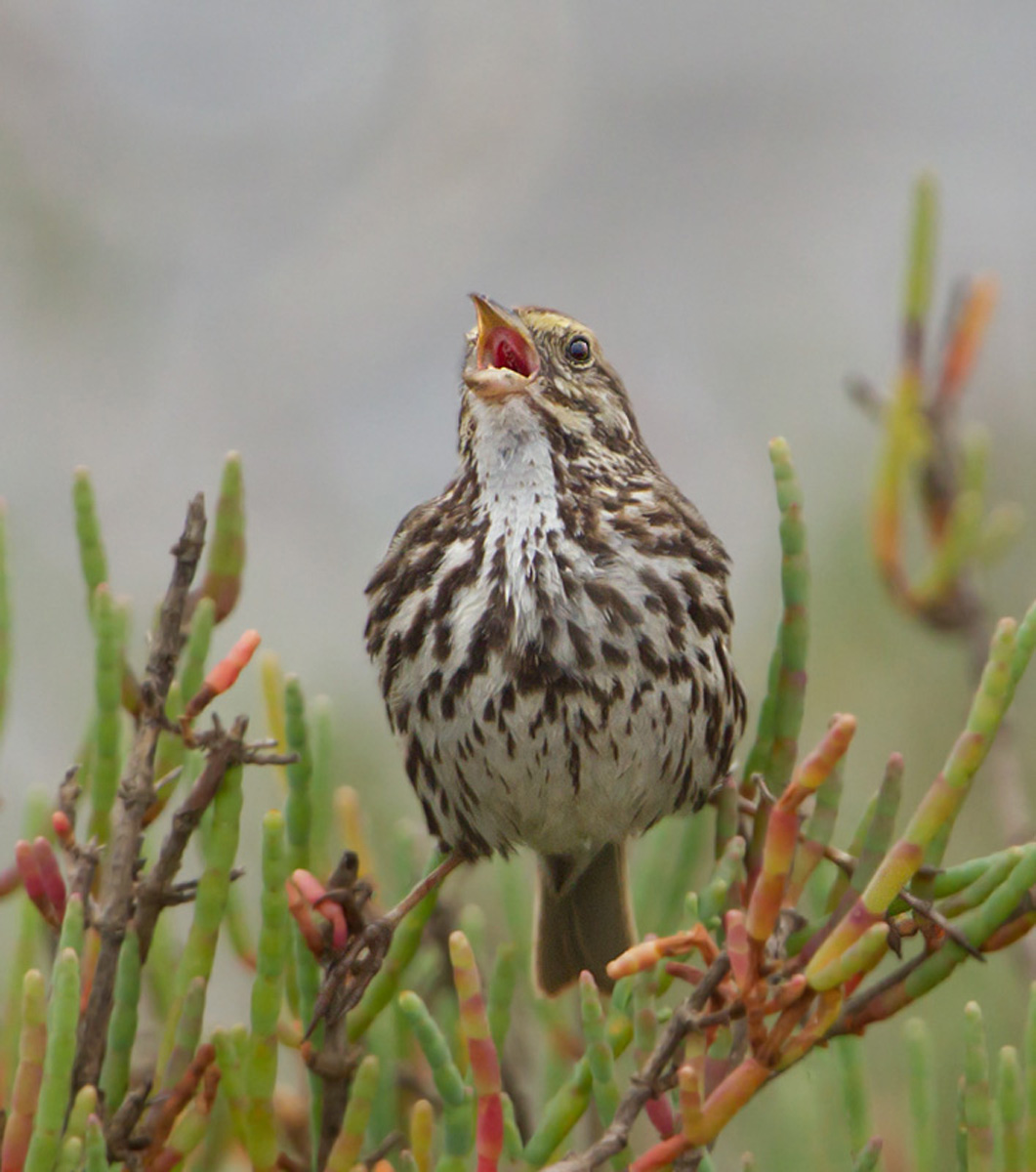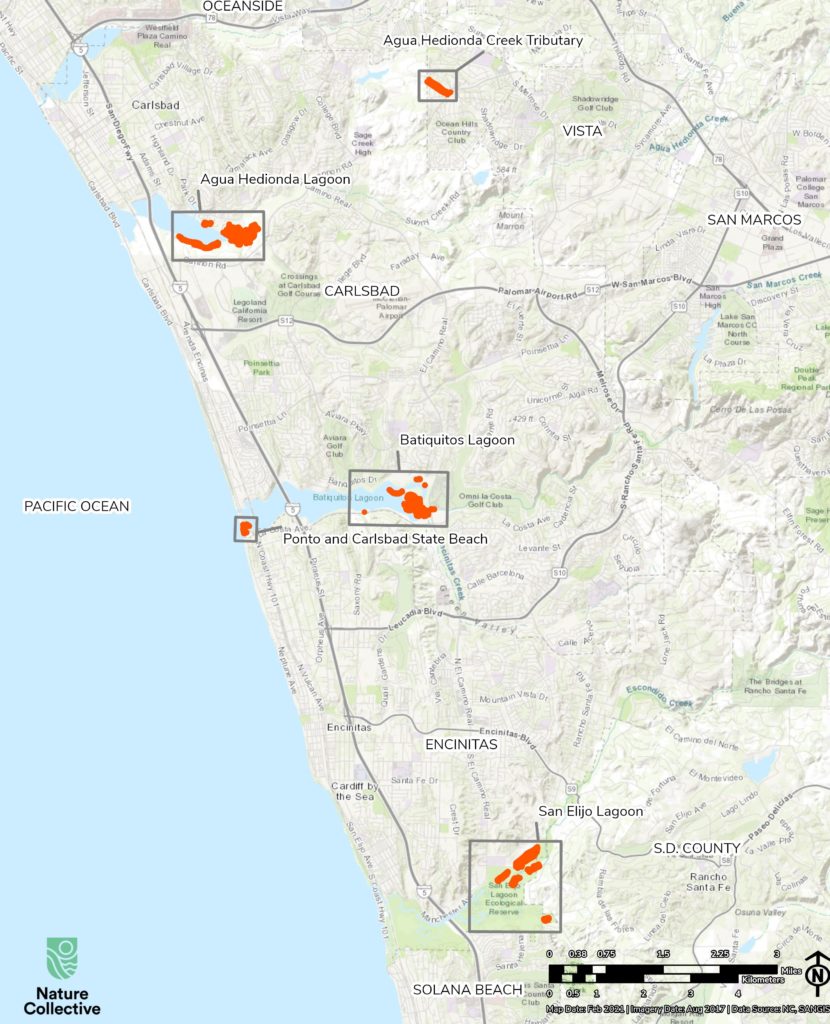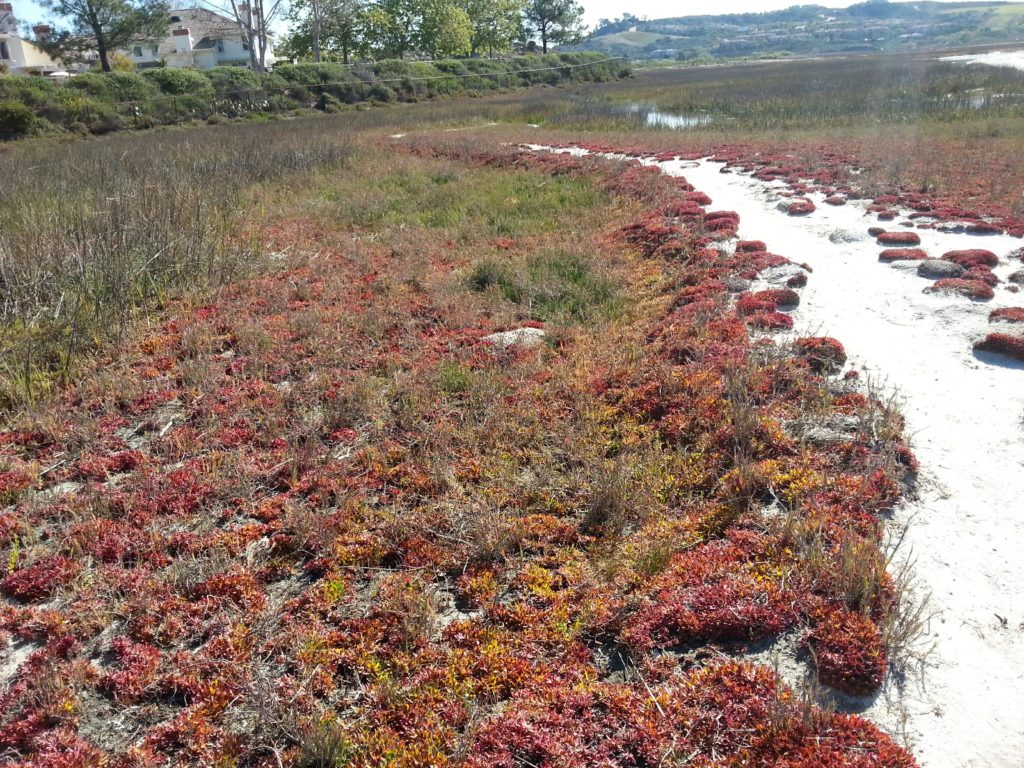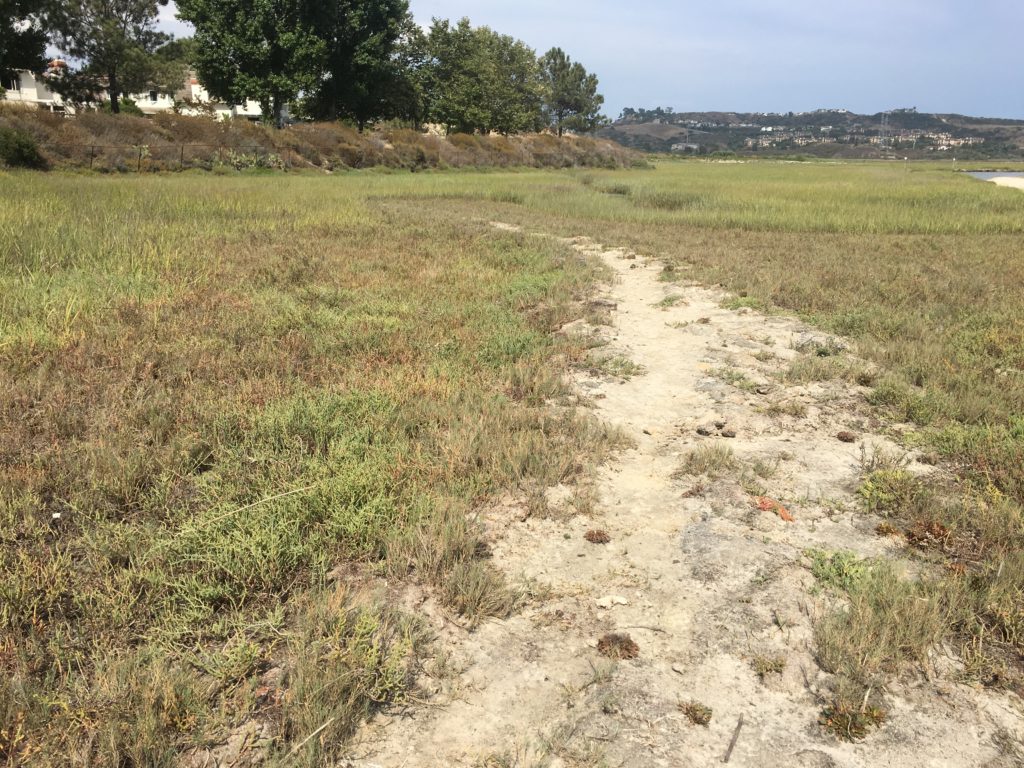Underwater Meadows of Life
Follow ( 0 Followers ) X Follow E-mail : * Follow Unfollow

Late in 2016 we began conducting a comprehensive habitat restoration project on 65 acres of coastal wetlands. This essential restoration focused on enhancing indigenous plant cover at sites in San Elijo Lagoon Ecological Reserve and beyond – including Agua Hedionda Lagoon, Batiquitos Lagoon, and Ponto Beach in San Diego North County.

Above: Restoration site map and the areas where our restoration efforts were focused.
By concentrating on these sites, we have increased indigenous plant species along the wildlife corridors that connect these critical habitats. This is a vital component in restoring habitat that is home to several threatened and endangered species.

Above: Belding’s Savannah Sparrow (Passerculus sandwichensis beldingi). Did you know? While other Savannah Sparrows are widespread and common, the Belding’s is specially adapted to coastal salt marshes — and can live nowhere else.
Photo by Chris Mayne
The Belding’s Savannah Sparrow is threatened in several ways. One of its threats is the rapid growth of non-indigenous and invasive species, such as Algerian sea lavender (Limonium ramosissimum). Algerian sea lavender tends to grow in the same salt marsh where the indigenous pickleweed plant tends to grow. Pickleweed grows lower to the ground than the Algerian sea lavender, so the two are in direct competition for resources.
Over the years, this sea lavender has dramatically decreased the number of pickleweed plants found in those same areas. This is a problem, because the Belding’s Savannah Sparrow’s nesting area of choice is within the pickleweed, low to the ground, but high enough to avoid damage from salt marsh flooding. So, the Algerian sea lavender’s height impairs the birds’ ability to make a nest in any area where it grows.
Throughout the span of this restoration, we used a combination of targeted non-indigenous plant removal, long-term site monitoring and maintenance to encourage indigenous plant growth. The presence of Algerian sea lavender, iceplant (Carpobrotus spp.), and other non-indigenous species hindered the growth of indigenous plants.

Above: Algerian sea lavendar (Limonium ramosissimum) | Agua Hedionda Lagoon 2018 before our restoration efforts

Above: Pickleweed (Salicornia pacifica); Agua Hedionda Lagoon 2019 after our restoration efforts
Your support, and the support of the California Wildlife Conservation Board, makes our efforts successful in achieving greater plant diversity. Indigenous plants are now growing at all these restoration sites, creating the foundation for healthy ecosystems that can benefit wildlife, you, and generations to come. We look forward to observing how these improved coastal wetland areas flourish, and how wildlife responds.
Stay connected as we visit each of the sites mentioned in this story. More news to come from the restorations we are monitoring now in Batiquitos Lagoon + Ponto Beach + and San Elijo Lagoon Ecological Reserve.
Your gifts make a difference! Join us today and help continue our work on behalf of nature + community.
Follow ( 0 Followers ) X Follow E-mail : * Follow Unfollow